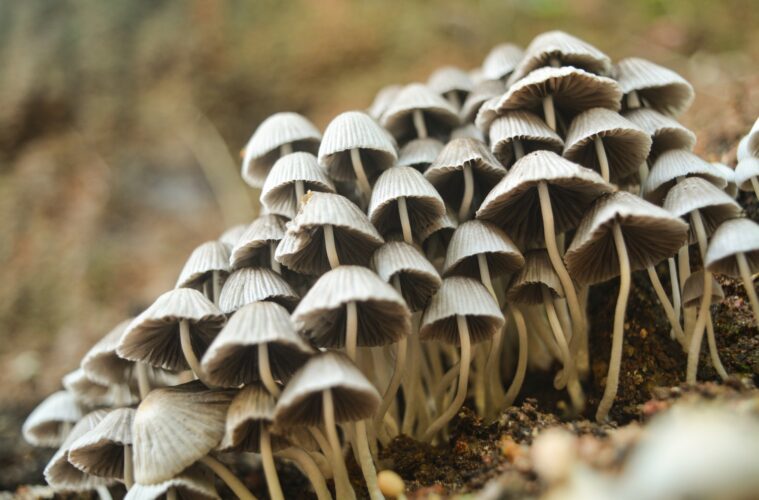Mushrooms are uniquely fascinating organisms that have held our curiosities for centuries. From herbal tea mixes to soup, humans have been using mushrooms to nourish our bodies as well as our minds. Lately, many people are jumping on the bandwagon and learning to grow mushrooms at home, but to some, the task may seem daunting. Mushrooms require a different type of care and set up than your typical houseplant or vegetable garden, so here are 4 things you need to have to start growing mushrooms yourself.
- Spawn
Spawn is a substance that has been inoculated with mycelium, which is what mushrooms grow from. The most commonly used types of spawn are sawdust and grain. They both have their upsides and downsides, but whichever type you choose to use will depend on the type of mushroom you want and the amount you wish to produce. A great resource for mushroom spawn is Out Grow. They have many types of fungi to choose from at prices that won’t break the bank.
- Substrate
The substrate acts as the growing medium for your mushrooms. It helps support the growing fungus both physically and by offering additional nutrients for the spawn to feed off of. Most mushroom farmers use the same three ingredients in their substrate: sawdust, wheat bran, and soybean hulls. These ingredients are relatively easy to source and somewhat cheap too. Most of them can be bought at your local feed supply store or farmers co-op. If you’re looking for substrate in bulk there’s likely a local farmer or two that would be willing to work something out to benefit everyone involved.
- A Flow Hood
Because fungus spores are so tiny, it’s difficult to make sure you’re dealing with the right stuff until the mushroom starts growing. A flow hood is a fan with a filter on it that helps purify the workspace while you’re mixing your spawn and substrate, removing harmful bacteria, viruses, and even other fungi spores. This is the easiest way to make sure that the mushrooms you’re planting are the only ones you’ll be expecting from that block. To maximize the efficiency of your flow hood, preparing your mushroom batches one type at a time will certainly cut down on the risk of cross contamination.
- A way to sterilize
As mentioned before, mushrooms like to spread, so proper sterilization is key to making sure your mushrooms stay where you want them. Spores can cling to your work surfaces and tools so using a steamer to clean surfaces or even a pressure cooker to clean tools is a great way to make sure your workspace stays clean and ready to go whenever you have work to be done.
Growing mushrooms at home or commercially has never been easier thanks to advancements in technology and people sharing their methods. This list is a great resource to start off on the right food when it comes to the fun world of growing fungi.

